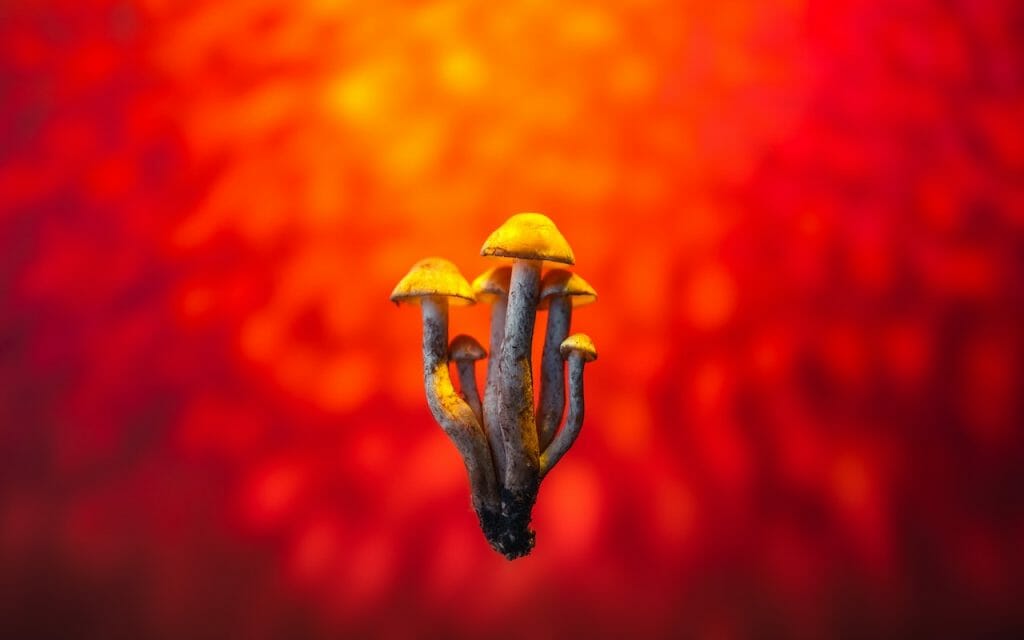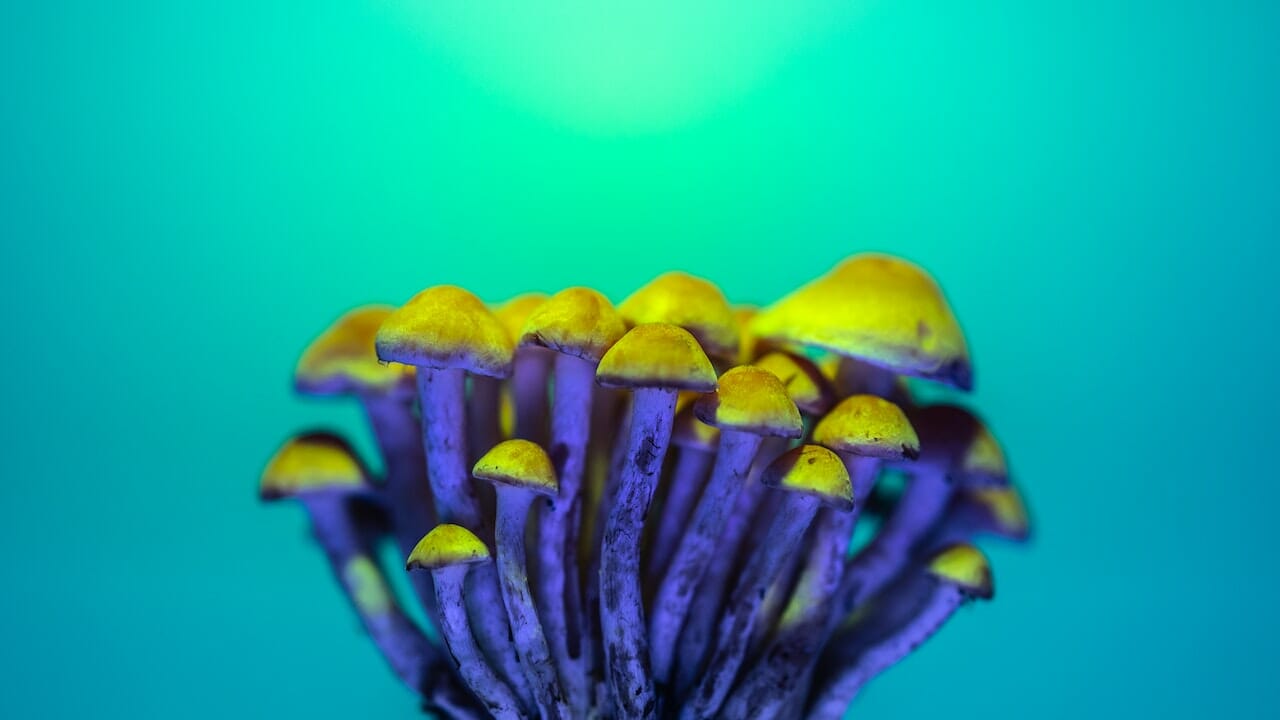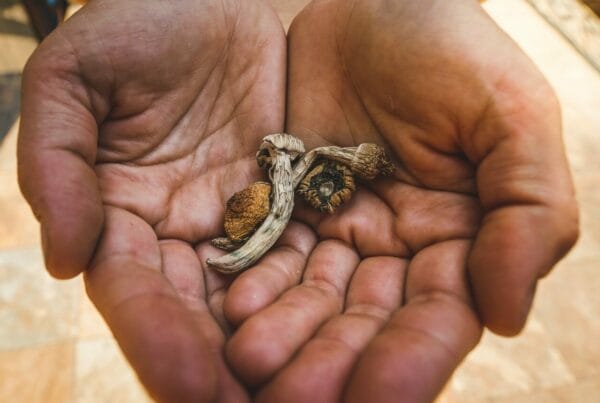Lysergic Acid Diethylamide (LSD) is a potent hallucinogenic substance that has been widely studied within the field of psychedelics. Initially known chiefly for its recreational usage, LSD has since evolved into a psychoactive compound with potential benefits for mental health. This shift in perception has paved the way for future research into the effects of LSD in more palatable forms such as LSD edibles.
Key Takeaways:
- LSD, a powerful hallucinogen, originates from the ergot fungus.
- LSD shares similarities with psilocybin and interacts with 5-HT2A receptors.
- LSD is known to induce visual alterations, mood changes, dissolution of the ego, and pseudo-hallucinations.

Introduction to LSD
LSD is an exceptionally potent hallucinogen that can dramatically change a person’s perception of reality and significantly distort sensory experiences. LSD originates from “ergot,” a type of fungus that grows on rye and other grains.
On a molecular level, LSD is a complex chemical belonging to the ergoline family. It comprises a bicyclic hexahydroindole group and a bicyclic quinoline group (lysergic acid). The term ‘Lysergic Acid Diethylamide’ originates from the functional group attached to its core. The structure of LSD is akin to other ergoline alkaloids, such as ergotamine, which is present in the ergot fungus Claviceps purpurea, and the neurotransmitter serotonin.
The Effect of LSD
Upon consumption, LSD travels to the brain and initiates chemical reactions that can persist for several hours. LSD may produce the following short-term effects:
- Unforeseen mood fluctuations
- Distortion of perception
- Feeling of dizziness
- Decreased appetite
- Impaired motor control
The Benefits What Are the Benefits of Using LSD?
The benefits of LSD are diverse and largely contingent on the dosage consumed. Most studies concentrate on the advantages associated with taking minimal amounts of this psychoactive substance. In the following sections, we explore the positive outcomes connected with LSD use.
Pain Relief and Neural Development
Research conducted by scientists at Maastricht University has demonstrated that a single microdose of LSD can provide pain-alleviating effects that persist for at least five hours, or even longer.
In the Cold Pressor Test, where participants immerse their hands in water at a temperature of 3°C (37.4°F) for as long as possible, those who had taken 20 mg of LSD were capable of keeping their hands submerged for 20% longer than those who hadn’t. They also reported less pain and discomfort.
Furthermore, LSD has the potential to aid in the development and growth of the brain’s 86 billion neurons. Moderate doses of LSD, ranging from 5 to 20 ug, heighten the levels of BDNF in blood plasma. This is noteworthy because mood disorders like depression, often associated with neuroplasticity issues, could be mitigated by LSD’s beneficial impact on neuronal health.
Improves Mental Health
Dr. Robin Carhart-Harris from Imperial College London formulated the entropic brain hypothesis. This concept implies that mental health disorders can be attributed to rigid thought patterns, perpetuated by an overly active default mode network (DMN). Psychoactive substances like LSD have the capacity to disrupt the DMN, amplify brain entropy, and facilitate the dissolution of negative neural pathways while promoting the establishment of positive ones.
A study consisting of over 1,000 microdosers indicated a decrease in depression. Additionally, a large cross-sectional study demonstrated a reduction in negative emotions and destructive attitudes, and an enhancement in open-mindedness and cognition.
Therapy for Addiction
A meta-analysis of randomized-controlled clinical trials involving the use of LSD in psychiatry concluded that it is particularly effective in treating alcohol dependency. This conclusion is further corroborated by the positive results achieved by numerous patients treated for alcoholism by Humphrey Osmond and at the Spring Grove Hospital Centre during the 1950s and 1960s.
Easing Anxiety and Depression at Life’s End
Dr. Peter Gasser has determined that LSD-assisted psychotherapy can assist terminally ill cancer patients in reducing their anxiety associated with the end of life. This therapy also significantly improves their overall quality of life. At present, a Phase 2 trial is underway to study the possible influence of LSD therapy on depression.
Decoding LSD Edibles: Their Ingredients and Manufacturing Process
LSD edibles are a type of food and beverage products that include the hallucinogenic substance LSD. These edibles come in a variety of forms, from chocolates, candies, and baked goods to unusual items like LSD mints.
Ingredients
- LSD: This is the active component that produces hallucinogenic effects. It is carefully measured and incorporated into the edible.
- Edible Base: The LSD is typically infused or dissolved into an edible medium such as a gummy, candy, sugar cube, or other ingestible substances. These mediums act as the carrier for the hallucinogenic compound.
- Flavouring and Ingredients: The specific edible product may contain flavourings, sweeteners, and other ingredients to enhance the taste and texture. This can include natural or artificial flavours, colours, and sugars, and can vary widely.
Manufacturing Process:
- LSD Synthesis: The first step involves the chemical production of LSD. This process requires extensive knowledge of organic chemistry and access to the necessary chemicals, equipment, and a laboratory environment.
- Liquid Formulation: Once the LSD is synthesized, it is usually transformed into a liquid form by dissolving it in a solvent. This liquid acts as a concentrated LSD solution.
- Infusion: The liquid LSD is then infused into an edible medium such as gummy candies, sugar cubes, or blotter paper. The infused medium absorbs the liquid, allowing the LSD to be consumed orally.
Experiencing the Psychedelic Impact of Psychoactive Substances in LSD Edibles
LSD creates intense visual effects. Colours seem more vivid, objects may seem to have halos or rainbows around them, and shapes can transform. Regardless of whether the eyes are open or closed, users may see
LSD prompts vivid displays of rapidly changing geometric patterns and other visuals, often brilliant in colour. While these can be bewildering, they are deemed “pseudo-hallucinations” because users are aware they are drug-induced rather than actual reality.
LSD provides an avenue for altering your perception of self and the environment. It can induce a range of mental states, making thoughts appear either exceptionally clear and meaningful, or fragmented and illogical. You may also perceive shifts in your sense of time, spatial awareness, and body image. The boundary between self and the external world can seem fuzzy, and some users even report sensory crossover, such as seeing music or hearing colours.
Suggested LSD Products
There’s a wealth of LSD edibles available, but it’s essential to source them from a trustworthy dispensary. Make sure the edibles are pure LSD and don’t contain other substances like PCP (embalming fluid), ecstasy, or ketamine.
Deadhead Chemist – LSD Infused Gummies
Deadhead Chemist offers LSD-laced edibles, with each gummy containing 100 micrograms (ug) of LSD. They come in a variety of flavours. Each packet contains a single gummy, which has demonstrated promise in assisting individuals with conditions such as obsessive-compulsive disorder (OCD), post-traumatic stress disorder (PTSD), alcoholism, depression, and cluster headaches.
Deadhead Chemist – Mint Tea
Deadhead Chemist’s raspberry mint tea provides a tastier, aromatic way to enjoy the effects of LSD. LSD and similar psychedelics can simulate the serotonin neurotransmitter and enhance the brain’s flow state.
Earthly Delights – Candy Flips
Candy flipping, which rose to fame during the late 1980s rave scene, remains popular with thrill-seekers and party-goers today. It combines two fantastic substances, often resulting in profound feelings of love and interconnectedness, alongside stunning visual effects like intensified colours, morphing objects, and complex geometric patterns.
Concluding Remarks
LSD has historically been linked to profound transformative experiences. With an increase in scientific knowledge about this substance, its popularity has skyrocketed. The introduction of LSD-infused edibles offers a new exploration path for enthusiasts. These delightful edibles have become an enjoyable and safe way to experiment with LSD in controlled doses.
As the leading supplier in Canada of high-quality shrooms online, Magic Mushrooms Vancouver Canada provides an extensive variety of LSD-infused edibles and cannabis products. Peruse our selection at your own pace, add your desired items to your cart, and unwind at home as we handle the delivery. We also offer a wide array of psilocybin shrooms, edibles, beverages, and capsules for your convenience. Be sure to check out our LSD delivery page for more details!
Frequently Asked Questions
What sets LSD apart from psilocybin?
FEATURES LSD PSILOCYBIN Origin Semi-synthetic chemical compound Naturally occurring in fungi Available Forms Tabs, microdots, liquid, gummies, blotter paper Dried mushrooms, capsules, teas, chocolates Potency Extremely potent, microgram doses (ug) Varies by mushroom species and preparation Onset and Duration Quick onset (15-60 minutes), short duration (3-5 hours) Gradual onset (30-60 minutes), moderate duration (4-6 hours)
How can one avoid negative experiences with LSD?
- Choose Your Setting Wisely
- Prepare Your Mind
- Start with a Small Dose
- Have a Trip Guide
- Create a Peaceful Atmosphere
- Use Deep Breathing and Grounding Techniques
- Accept and Let Go
What is the duration of the effects?
The effects of the substance begin to emerge between 30-60 minutes after ingestion. Individuals with a higher sensitivity to psychedelics may start experiencing the effects sooner.
In just 15 minutes, you may start noticing the effects. It usually takes about an hour to determine if you’re under the influence of LSD. The peak of your trip typically arrives around three hours into your experience. You might perceive time as slowing down and could possibly experience hallucinations. Stay strong, as it’s quite normal to feel detached from reality during this phase. This peak phase generally lasts between 3 and 5 hours, followed by a coming down period that continues for another 3 to 5 hours.
How does LSD interact with the human body?
LSD primarily engages with the brain’s serotonin system, binding to and stimulating the 5-HT2A receptor. This engagement sets off a chain of neurochemical and physiological responses. The effects of LSD, which can vary significantly, can be shaped by certain factors.
Are there other forms of LSD besides edibles?
Yes, there are. LSD is available in various forms. The four main types of LSD products are blotter paper, liquid solutions, tablets/microdots, and gelatin sheets.
Suggested Readings:
| FEATURES | LSD | PSILOCYBIN |
| Origin | Semi-synthetic chemical compound | Naturally occurring in fungi |
| Available Forms | Tabs, microdots, liquid, gummies, blotter paper | Dried mushrooms, capsules, teas, chocolates |
| Potency | Extremely potent, microgram doses (ug) | Varies by mushroom species and preparation |
| Onset and Duration | Quick onset (15-60 minutes), short duration (3-5 hours) | Gradual onset (30-60 minutes), moderate duration (4-6 hours) |





